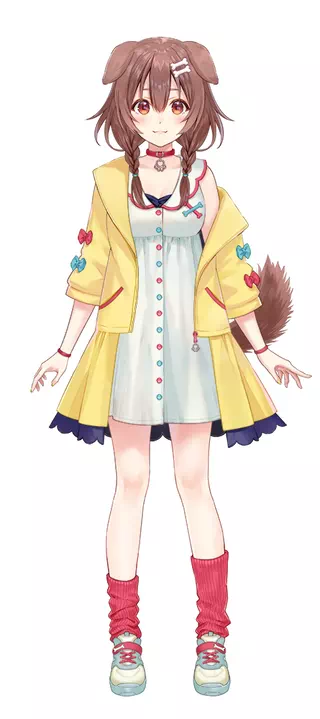tachi-e
A forward-facing style of character sprite popular in visual novels. Tachi-e means "standing image". They are commonly (but not always) full body, standing, and feature a simple background.
Tachi-e originated as character art in visual novels and adventure games. Often this is a front-facing character sprite used during conversations with various prepared expressions and poses that can be switched as it flows. It does not strictly require your character to be standing, nor be full body (e.g. from the knee or waist up), as long as art is reusable enough - it should qualify.
Aside from the regular tachi-e used in story mode, many gacha games' skin illustration will also have a tachi-e aesthetic, thus they sometimes also come with a faux figurine counterpart, usually being its evolved form. A clean character art removed from a faux figurine will also likely become a tachi-e if the character is standing, if they're sitting it's invisible chair instead.
When tagging, use the following rule of thumb: if you can slap an image onto the random background, add a textbox and the result will look like fake screenshot it should probably be considered a Tachi-e.
Tachi-e is not applicable if image:
- Has more than one instance of the character (turnarounds, reference sheets, multiple views, variations, multiple expressions, etc...): post #3490670, post #2195716, post #3213462, post #2538995, post #2288278
- Has non simple or non transparent backgrounds (zoom layers, gradient background, etc..): post #2925837 (vs post #2951458), post #4133229 (vs post #4133230), post #4028183, post #4151481
- Is a character profile or featuring character stats
- Is a faux figurine or a dakimakura(which is lying)
- Has a tachi-e within screenshots or fake screenshots: post #818170, post #1713628
- Has an extra outline: post #3589935 (vs post #3589913)












